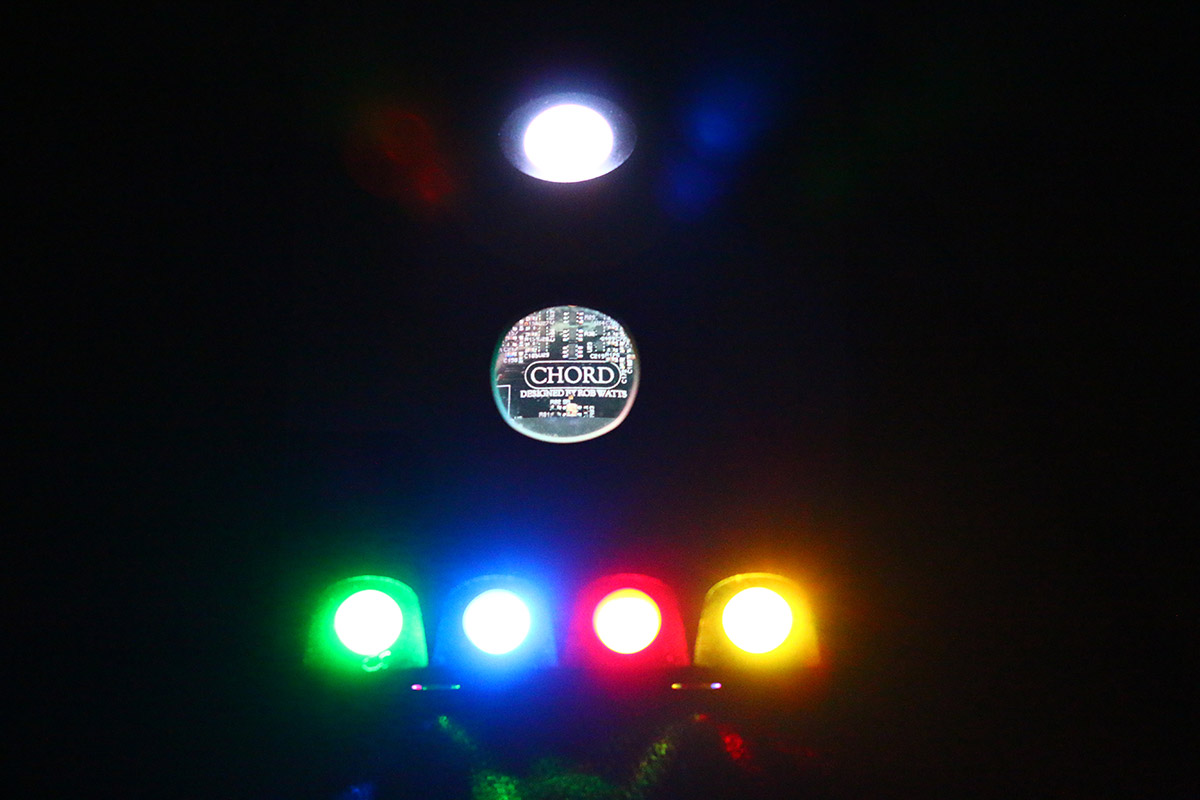
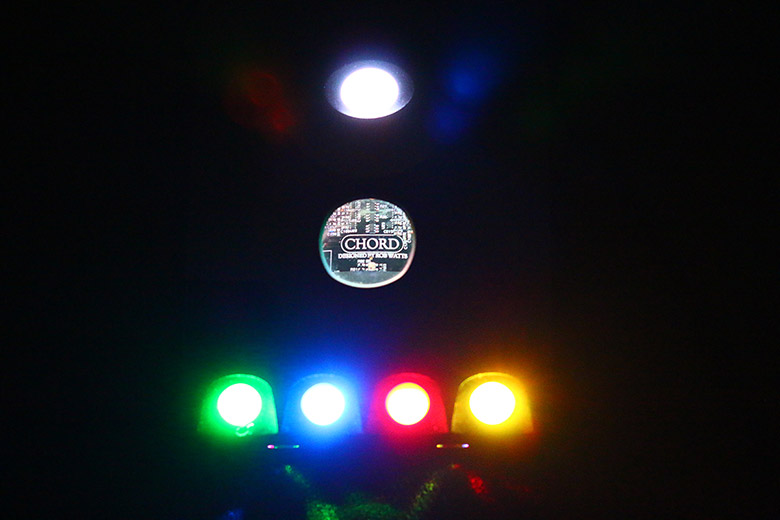
The Master Switch


The Master Switch
Chord Electronics are mad. Other companies will make a high-end DAC, and call it done. Chord made one, then gave it Bluetooth, then put in a package small enough to slip into a pocket, then made it look like something you'd see in a music video from 1988. We'll give them this: they certainly don't lack ambition. In this review, we break down the sound, design, packaging and accessories, specs and more of the Chord Hugo 2. To see how it stacks up, check out our list of the best DACs.
The sound quality of the Chord Hugo 2 is ridiculous. It's stupendously good. At $2,695, it had better be, but even considering that lofty price, it manages to impress. The circuitry inside this little psychedelic box offers truly unbelievable detail, giving you infinitely more information than just about every other DAC on the market. You will hear every note, every lyric, every single element of the song with absolutely breathtaking clarity. The process of converting digital files to analog sound is a contentious one among those who love audio gear, but even the biggest cynic would be hard-pressed to deny there's something special going on here.
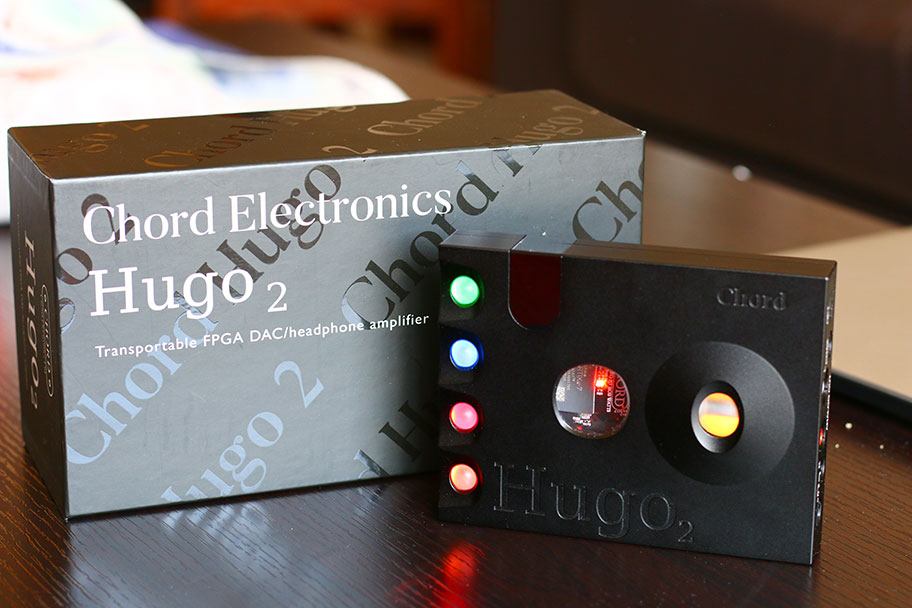
It's all down to Chord's Field Programmable Gate Array, a type of conversion circuitry that the company has stuck with for a while, with magnificent results. There's such coherence and purity to the sound, such incredible depth, that it made us laugh with delight more than once. The Hugo 2 doesn't quite deliver the best sound in this price range – that would be the incredible Benchmark DAC3 HGC (full review here). The Benchmark delivers that sound at a lower price - $2,195, a good $500 cheaper than the Hugo. But as we'll explain, there's a lot more going on here than just pure sound quality, and there are plenty of things that the Benchmark can't match.
One of those things are the filters that the Hugo 2 comes with. Say what you like about the Benchmark: it may have had amazing sound, but its filters were almost too subtle to be noticed, and were a total pain to activate. Not the case for the Hugo 2. The Hugo 2 uses one button to cycle through four filters, starting at completely neutral before letting you move through a high-frequency roll-off, a warmth filter, and a combination of the two. And here's the thing: unlike so many other digital-to-analog converters, the filters genuinely make a difference. They change the sound for the better, and if you think that the level of detail the Hugo 2 offers makes it sound a little cold, then at least one of these filters will be able to add a bit of life back into the sound. Our preference was the warmth filter, without any high-frequency roll-off. Once you've heard what it does to metal, and dubstep, you'll probably agree with us.
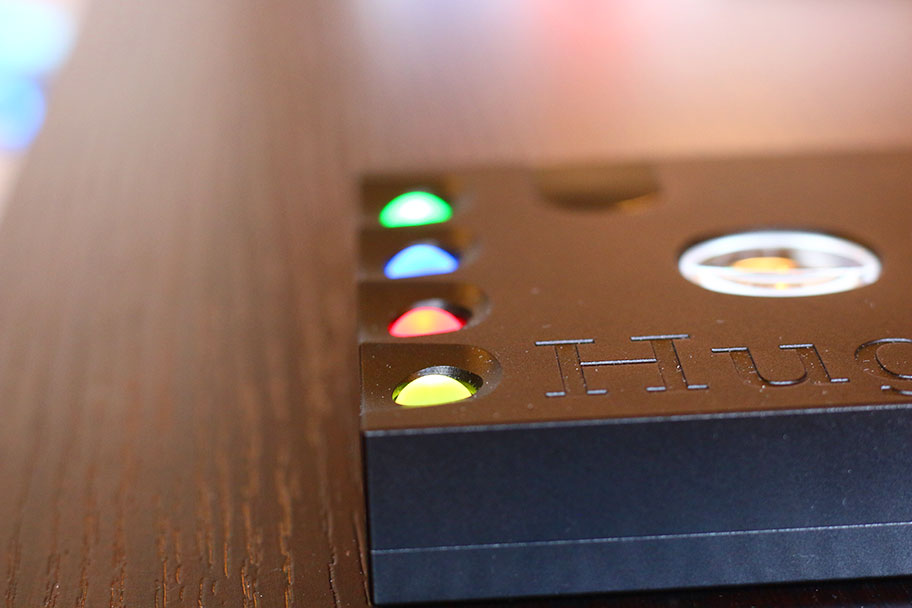
The sound filters aren't the only options you have. You've also got a crossfeed control, allowing you to blend the two audio channels into one another. Confusingly, Chord labels this as X-PHD – no, we have no idea why – but it, too, makes a real difference when activated. It's great to be able to have such intuitive, responsive control of the audio. It was a real pleasure to be able to isolate the twin channels when we wanted to analyse what we were hearing, and blend them together when we just wanted to sit back and enjoy how marvellous the sound was. Be warned: while cheaper DAC options from Chord - like the $536 Mojo (full review here) - are equally excellent, they don't come with this crossfeed option, or the filters. You'll need to shell out more cash for the real thing to get the full experience.
In line with the enormous price tag, the Hugo 2 comes with a range of options to receive audio. You can connect via USB, straight from your computer. You can connect via optical, or via a 3.5mm coax cable. You can, joy of joys, connect via aptX Bluetooth - something that other DACs in this price range almost never attempt. Even the mighty Schiit Yggdrasil didn't attempt that particular trick. And while we didn't think there was a significant difference in audio quality between the different connections, we really loved having the options available. Bluetooth, in particular, was a dream, with a connection that took seconds, and with almost zero dropouts. Its inclusion makes the Hugo 2 fully portable - although, you will need a reasonably capacious pocket to slide it into, and you will need to be comfortable taking a $2,695 piece of equipment on the go. If you do, good luck to you.
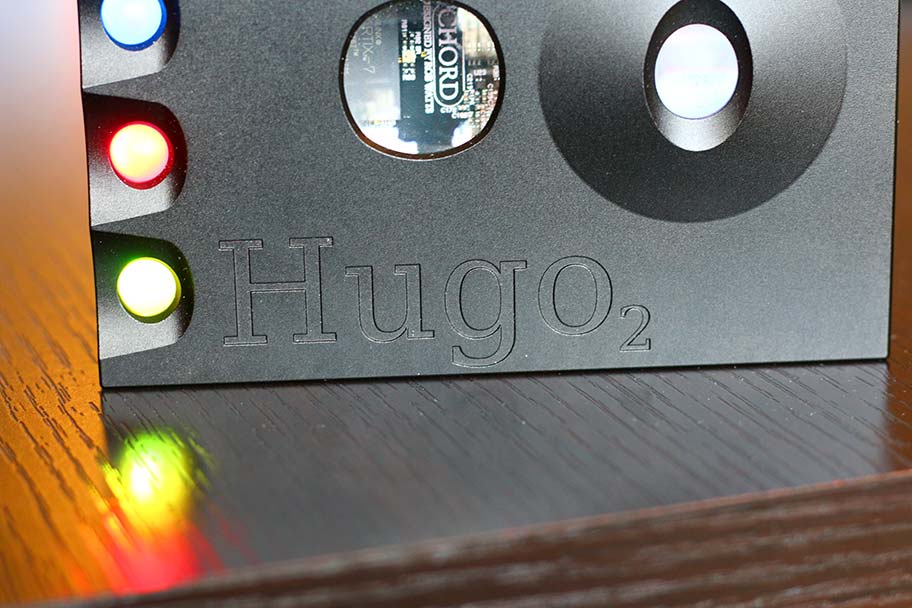
One of the questions we get asked most frequently, especially from visitors to our lists of the best DACs and headphone amps, is how we choose which models go on which roundup. That's because there's a huge amount of crossover with many headphone amps that include DACs, and their ability to function as both. The Hugo 2 is no exception. You can, if you are so inclined, use it as a combination DAC and headphone amp, connecting your headphones directly to it.
This is the one area in which it doesn't perform quite as well as we'd like it to. It's not that it's a bad headphone amp – far from it. It's just so much better when connected to something that was designed specifically to be a headphone amp. In the time we spent with it, we found that we much preferred to connect it up to a dedicated amplifier – the one we found ourselves coming back to was the so-good-it-doesn't-seem-real Schiit Magni 3 (full review here). Have the Hugo 2 go solo, and you'll get an excellent performance. Pair it with a good amp, and that performance becomes world class. There's no question that it's one of the best DACs ever made, but you definitely need an additional piece of equipment to bring the best out of it. On this site, you'll see it lodged firmly in the best DAC list.
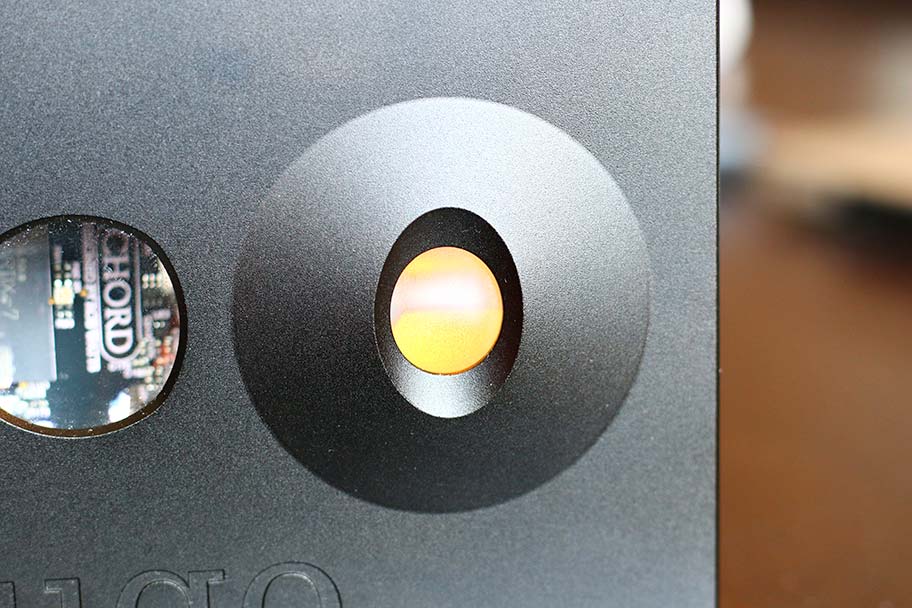
The Hugo 2 looks like something the Wakandans would build to help Black Panther take down Thanos. No, it looks like it was taken straight from a pedestal in a high-class gallery, where people in hipster glasses gathered around it to discuss whether or not it counted as art. In fact, we've got it. It's what happens when an audio engineer takes way too much LSD. We don't mean to suggest that anyone at Chord has been on the hard stuff, of course, but you can't look at the Hugo 2 without wondering how on earth it got this way. Its design is so singular, so striking, that it's impossible to imitate. Nobody but Chord is ever going to make something that looks like this. Or, if they do, we wish them luck in the copyright lawsuit.
It might just be a black metal box the size of a small paperback book, but it has this enormous glowing eye in the middle of it. The eye is the volume control – don't worry, we'll get there – and next to it is a lens that lets you look right into the guts of the thing, and which serves as a sample rate indicator. Because of course it does. Next to the enormous, embossed Hugo 2 logo are four glowing, colorful buttons, which let you control the filter, the input, the crossover, and the power. Other DACs in this price range might be good-looking – we are thinking specifically of the Mytek Brooklyn+ DAC, which looks rad. But there's no piece of audio equipment on the planet as instantly recognisable and as utterly loony as the Hugo 2. We love it.
Not that everything works as it should. The aforementioned buttons are slightly wobbly, rather than solid, and rattle a little bit when you push them. That's a little bit below the standard we expect of a piece of audio equipment in this price range. We tracked down someone with a second Hugo, and although the buttons in that one didn't rattle as much, there was definitely some movement. This might be because we were testing a slightly older review unit, one which had seen a bit of action – it would make sense, given that in our second test, the unit was a year old, or thereabouts. If that's the case, then it's worth noting that you'll see a little bit of movement over time.
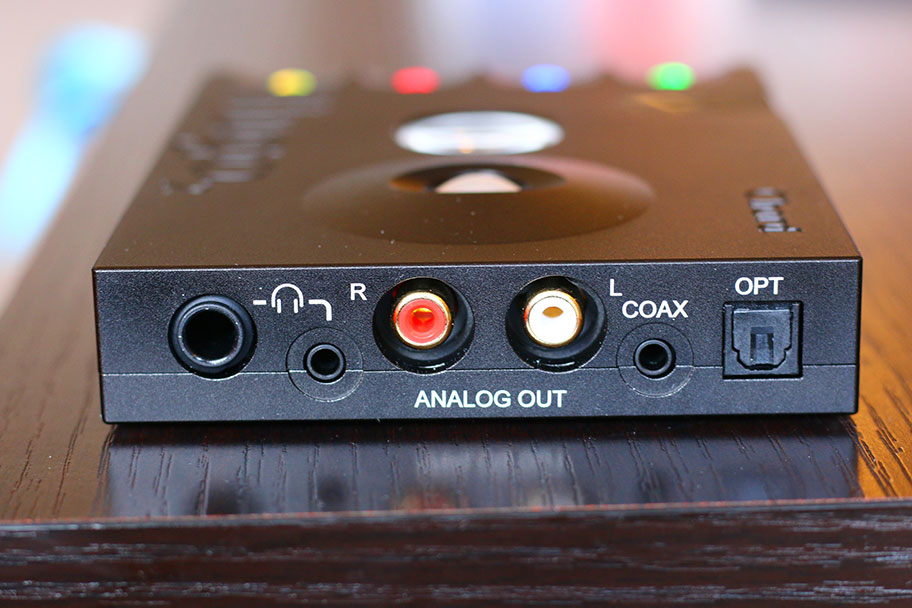
It's worth going into how you actually control this space oddity. Essentially, the buttons change color depending on what filter or input is selected, and the volume wheel-ball-sphere-thing in the center of the eye actually changes color as you roll it back-and-forth, to indicate how low or how high your volume is. For the record, red is the lowest, white as the highest, and Chord provide a helpful spectrum in the manual. We've seen plenty of reviews and heard plenty of complaints about how the control system is unintuitive and clumsy, and we confess that we were a little bit worried ourselves. Our previous experiences with DACs and color schemes wasn't good – just check out our review of the iFi Audio Micro iDAC2. But for whatever reason, we never had a problem with the color scheme of the Hugo 2's controls. It never felt like we had to reach for the manual, possibly because of sensible decisions like making the input light turn blue when Bluetooth is selected. And we have to be honest: the rolling, color-changing volume knob is really cool.
The lens in the center, which lets you look into the circuitry and gives you a glimpse of a subtle Chord logo, also contains a light that doubles as a sample indicator. The Hugo 2 takes a reassuringly large range of audio files, ranging from 44.1kHz PCM to DSD 512. Although, that isn't too drastic a departure from what many leading DACs offer - hell, even the $350 Resonessence Herus gets close - it's still good to have. There are two headphone outputs, as well as an analog out, and you can set it to start in line level mode if you want to use it as a DAC for a hi-fi system – although that will put the volume at maximum, so be damn careful that your headphones aren't plugged in.
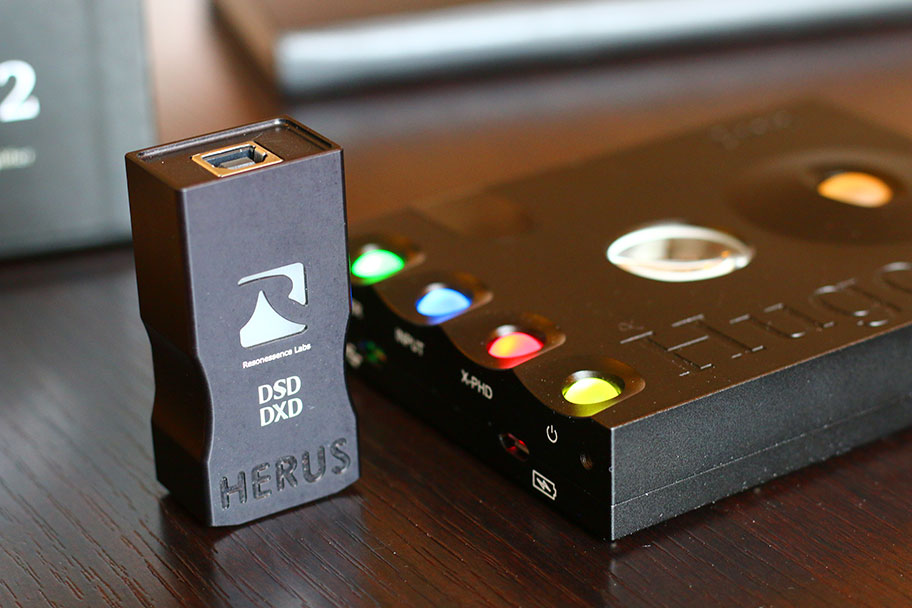
Do you know how strange it is for us to be discussing battery life for a DAC? But since the Hugo 2 has Bluetooth, that's exactly what we need to do. It's pretty solid - especially given the amount of heavy lifting the circuitry is having to do. Chord claims eight hours, and we managed about seven from a full charge, which itself takes about two hours. And of course, the power indicator flashes different colors depending on how much battery you have left. What we do like is that the USB data port and charging port are separated, meaning you can listen while you charge if you have a second USB cable.
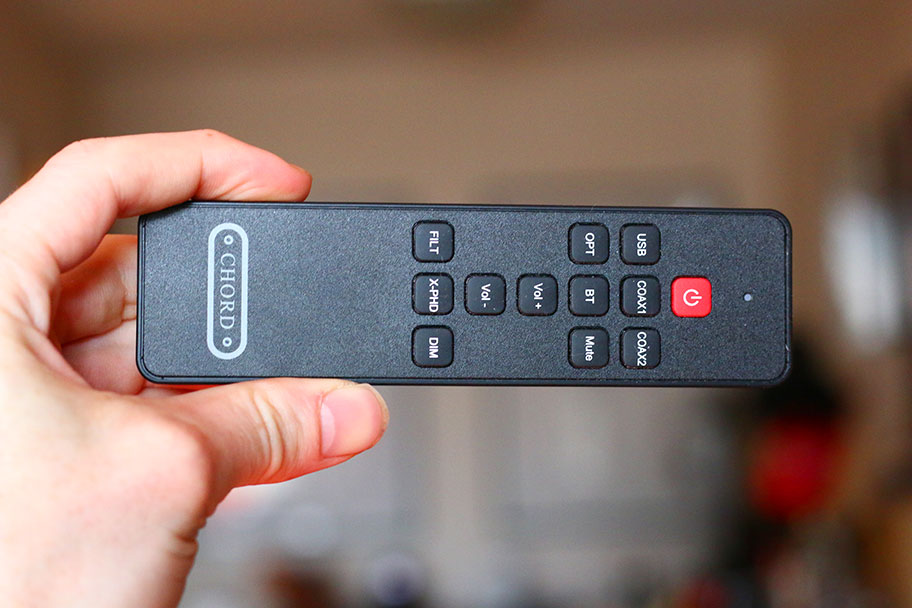
Like many DACs in this price range, the Hugo 2 comes with a remote. It's almost a disappointment to see how…well, how normal it is. There are no colors, no psychedelic orbs. Just a slim black slab with a bunch of clearly labelled buttons. How boring. Unfortunately, the black rubber buttons pick up quite a bit of dust, but otherwise, the remote works well. Plenty of DACs come with remotes – we particularly like the one packaged with the $2,595 NAIM DAC V1 – and it's a shame that Chord didn't push the boat out here.
Beyond that, you get a whole range of cables – including a USB data and charging cable, a wall plug with various adapters, and an optical cable - and a comprehensive manual, all wrapped up in a slick box. Definitely hold onto that manual, by the way, or use the digital version Chord have on their website. The Hugo 2 is intuitive, but you'll want to keep the manual handy for certain things.
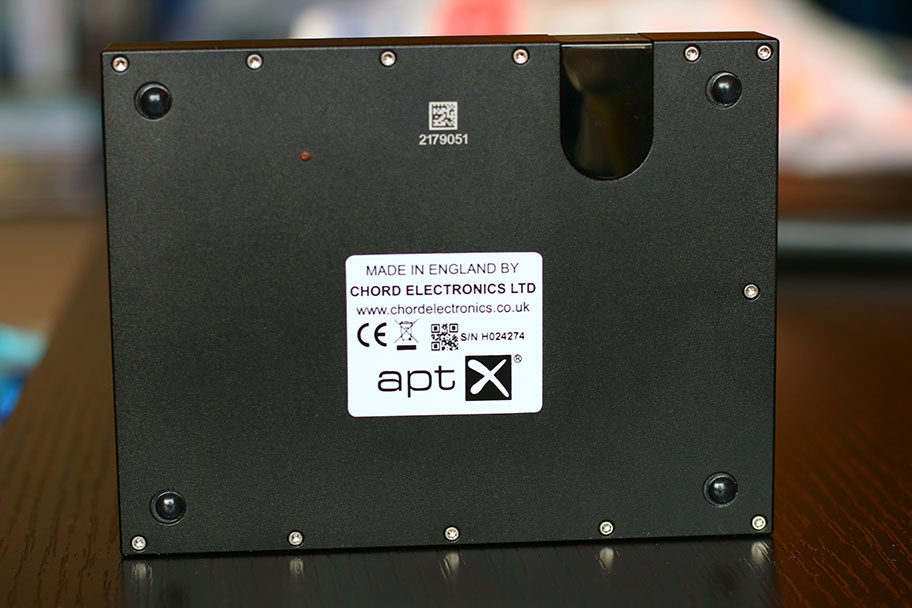
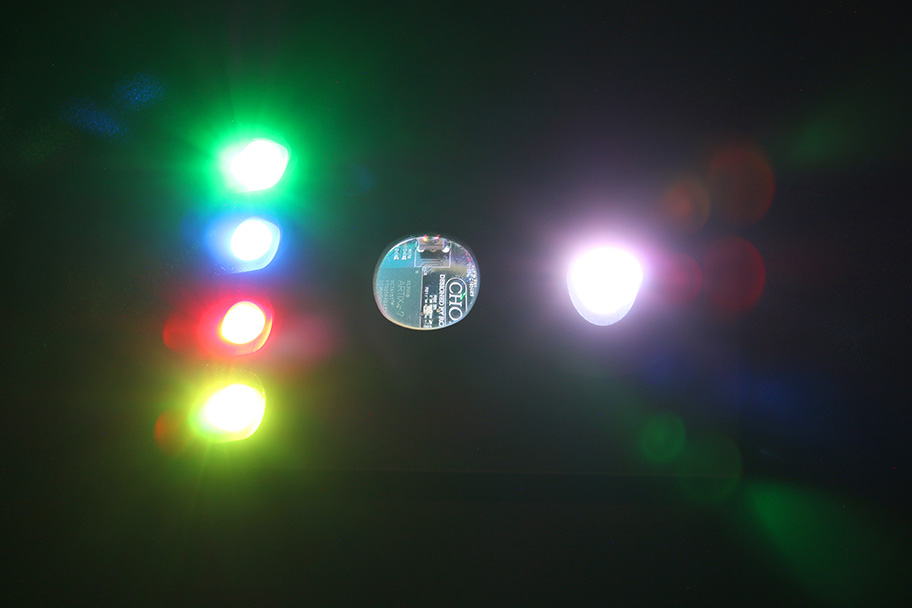
| DAC | Price | Amp | Chip | DSD? | Max Sampling |
|---|---|---|---|---|---|
| Chord Electronics Hugo 2 | $2,695 | Yes | Xilinx Artix 7 | Yes | 32-bit/768kHz |
| Benchmark DAC3 HGC | $2,195 | Yes | ESS 9028PRO | Yes | 32-bit/192kHz |
| Schiit Yggdrasil | $2,399 | No | AD5791BRUZ | No | 24-bit/192kHz |
| Mytek Brooklyn DAC+ | $2,195 | Yes | Sabre 9028 Pro | Yes | 32-bit/384kHz |
| CHORD Electronics Mojo | $536 | Yes | Xilinx Artix-7 | Yes | 32-bit/768kHz |
Want Even More Master Switch? Sign Up For Our Weekly Newsletter!
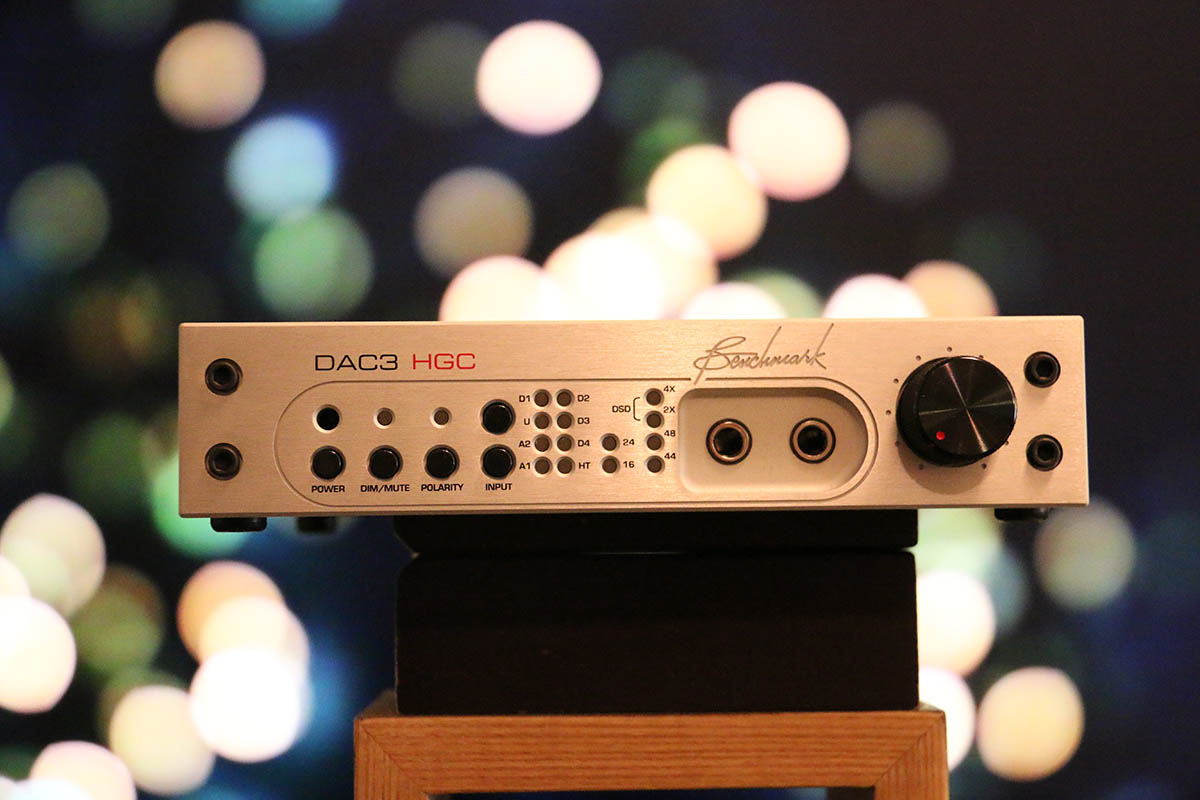
The Benchmark DAC3 HGC is arguably the main competition for the Hugo 2 - the tuxedoed concert-goer to Chord's Woodstock attendee. With its design, meant to be mounted in a studio rack, it straddles the line between professional and home use. Its interface bears this out, too - a complex, complicated mess of tiny blue lights that takes a serious manual to understand. But the sound makes all the effort worthwhile. It's neutral and analytical, even more so than the Chord, and does a stunning job of presenting the music exactly as it's meant to be heard. If you like your DACs to do their job without getting in the way, or coloring the sound at all, then the DAC3 is a must-buy. It's also cheaper than the Chord, at $2,195 versus $2,695.
Then there's the Schiit Yggdrasil. Like the Hugo 2, it has an unmistakable design: a monstrous silver slab, with distinctive design touches, like the subtle Schiit logo and the recognizable grille pattern. The sound isn't quite as good as either the Benchmark or the Hugo, we think - not bad, by any means, but it's definitely not our first choice. It also doesn't have quite as many features. There's no Bluetooth, for one thing, but you do get a pair of balanced outputs. We like this DAC, but the Hugo 2 is a more attractive, versatile package that sounds better - and for only $300 more than the $2,399 Yggdrasil.
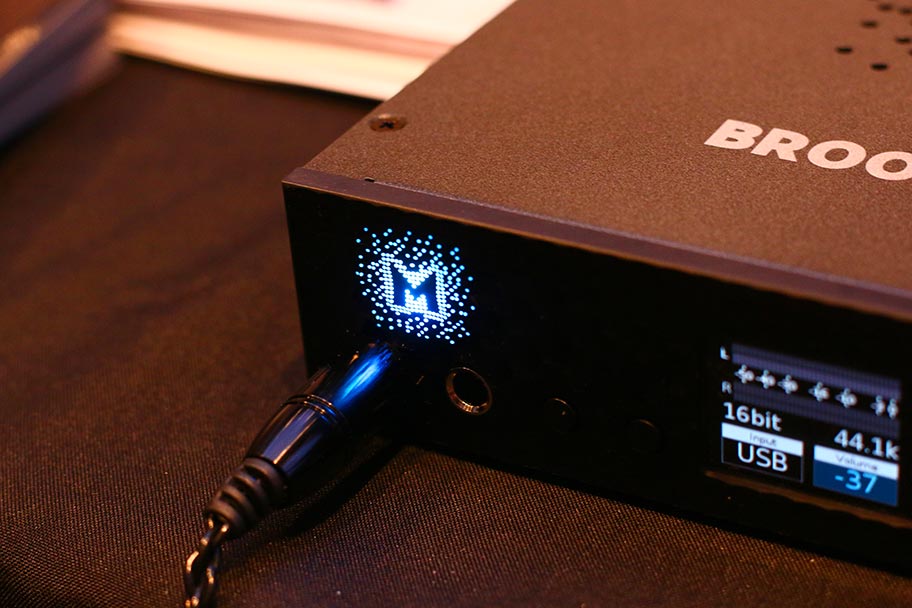
New York's Mytek make some solid stuff, and even though they're less well-known than Schiit or Chord, their Brooklyn+ DAC is the stuff of dreams. It costs the same as the Benchmark DAC3 HGC ($2,195), and while the sound quality isn't quite as precise, the actual experience is much better. The user interface is superb, with a color screen that makes it easy to figure out files types and input selection - no more checking the manual to reference colored lights. For ease of use, this has the Hugo 2, Yggdrasil, and DAC3 beaten. This makes it ideal if you're building a system to suit plenty of different sources, file types, and sizes, and it's definitely one of the top DACs available today.
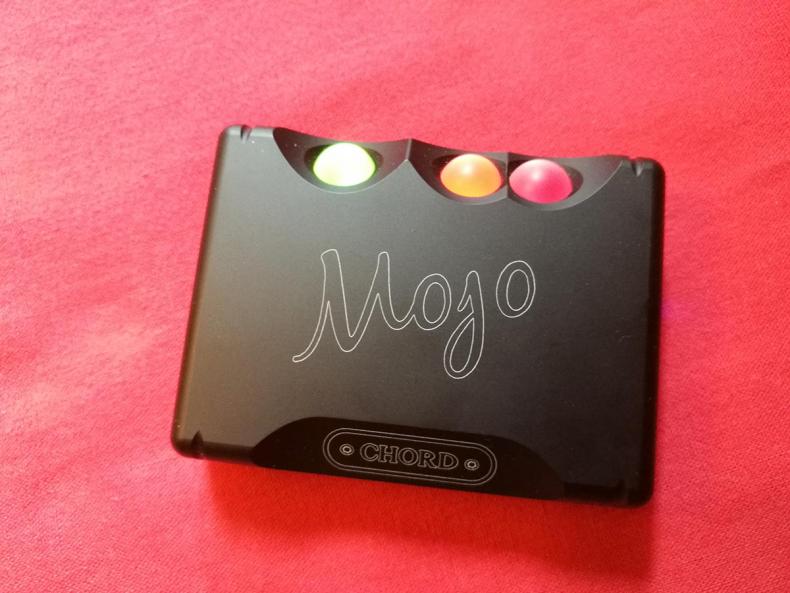
Can't afford the Hugo 2? Chord have a very long history, with a huge product line - including such magnificent specimens as the Hugo's predecessor, the Dave. (Yes, they called it Dave). For a budget-friendly experience, try the Mojo. At $536, it's a fifth of the price of the Hugo, and is designed to be both easy-to-use, and portable. In these aspects, it actually beats the Hugo, thanks to its diminutive size. In his review, our writer Niko said, "There is a running joke among music producers that they are never able to hear 'that' sound again after leaving the audio mastering suite (the place where only the pair of speakers are worth $100K). The Mojo kicks up a very close second place to that scenario in our opinion, and for the price bracket, it really gives an astounding performance." Since his review, Chord has released the Poly, an add-on module for the Mojo that turns it into a music streamer, and makes it an even more attractive proposition. If that sounds good to you, you're going to have a lot of fun here.
A last word on the Hugo 2. DACs can be the most boring pieces of gear in the world - something that even audiophiles will only buy under protest. The Hugo 2 is different. It's an idiosyncratic, colorful, weird, wonderful explosion, that sets out to do absolutely everything, and largely succeeds. We adored it - and if you have the cash to spend, we guarantee you will too.